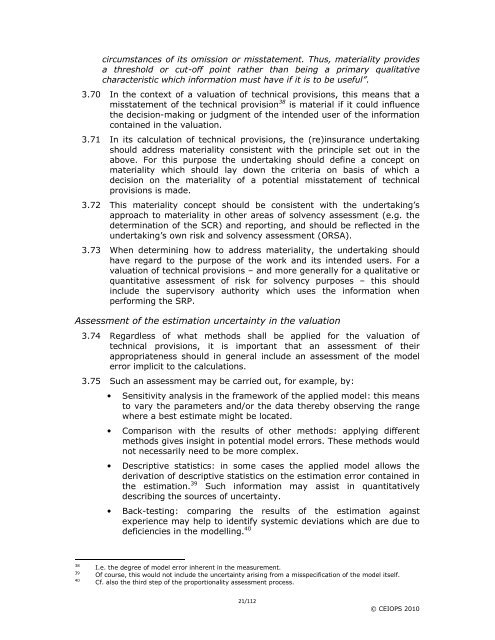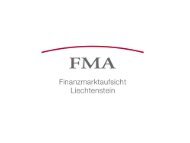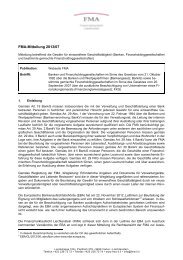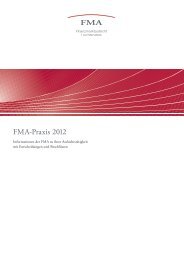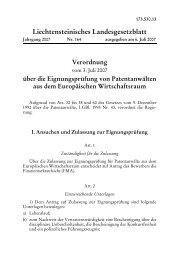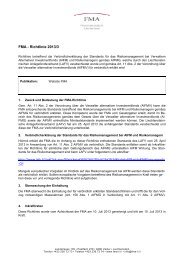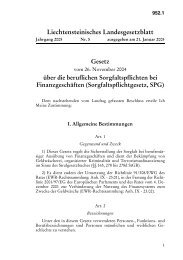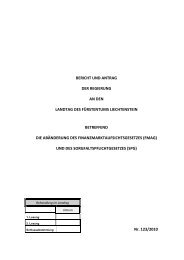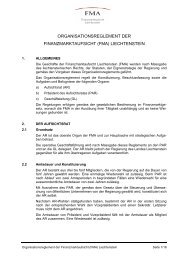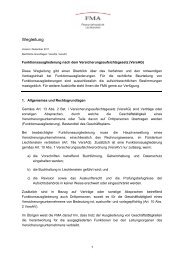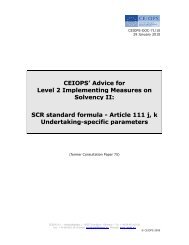CEIOPS' Advice for Level 2 Implementing ... - EIOPA - Europa
CEIOPS' Advice for Level 2 Implementing ... - EIOPA - Europa
CEIOPS' Advice for Level 2 Implementing ... - EIOPA - Europa
Create successful ePaper yourself
Turn your PDF publications into a flip-book with our unique Google optimized e-Paper software.
circumstances of its omission or misstatement. Thus, materiality provides<br />
a threshold or cut-off point rather than being a primary qualitative<br />
characteristic which in<strong>for</strong>mation must have if it is to be useful”.<br />
3.70 In the context of a valuation of technical provisions, this means that a<br />
misstatement of the technical provision 38 is material if it could influence<br />
the decision-making or judgment of the intended user of the in<strong>for</strong>mation<br />
contained in the valuation.<br />
3.71 In its calculation of technical provisions, the (re)insurance undertaking<br />
should address materiality consistent with the principle set out in the<br />
above. For this purpose the undertaking should define a concept on<br />
materiality which should lay down the criteria on basis of which a<br />
decision on the materiality of a potential misstatement of technical<br />
provisions is made.<br />
3.72 This materiality concept should be consistent with the undertaking’s<br />
approach to materiality in other areas of solvency assessment (e.g. the<br />
determination of the SCR) and reporting, and should be reflected in the<br />
undertaking’s own risk and solvency assessment (ORSA).<br />
3.73 When determining how to address materiality, the undertaking should<br />
have regard to the purpose of the work and its intended users. For a<br />
valuation of technical provisions – and more generally <strong>for</strong> a qualitative or<br />
quantitative assessment of risk <strong>for</strong> solvency purposes – this should<br />
include the supervisory authority which uses the in<strong>for</strong>mation when<br />
per<strong>for</strong>ming the SRP.<br />
Assessment of the estimation uncertainty in the valuation<br />
3.74 Regardless of what methods shall be applied <strong>for</strong> the valuation of<br />
technical provisions, it is important that an assessment of their<br />
appropriateness should in general include an assessment of the model<br />
error implicit to the calculations.<br />
3.75 Such an assessment may be carried out, <strong>for</strong> example, by:<br />
• Sensitivity analysis in the framework of the applied model: this means<br />
to vary the parameters and/or the data thereby observing the range<br />
where a best estimate might be located.<br />
• Comparison with the results of other methods: applying different<br />
methods gives insight in potential model errors. These methods would<br />
not necessarily need to be more complex.<br />
• Descriptive statistics: in some cases the applied model allows the<br />
derivation of descriptive statistics on the estimation error contained in<br />
the estimation. 39 Such in<strong>for</strong>mation may assist in quantitatively<br />
describing the sources of uncertainty.<br />
• Back-testing: comparing the results of the estimation against<br />
experience may help to identify systemic deviations which are due to<br />
deficiencies in the modelling. 40<br />
38 I.e. the degree of model error inherent in the measurement.<br />
39 Of course, this would not include the uncertainty arising from a misspecification of the model itself.<br />
40 Cf. also the third step of the proportionality assessment process.<br />
21/112<br />
© CEIOPS 2010


